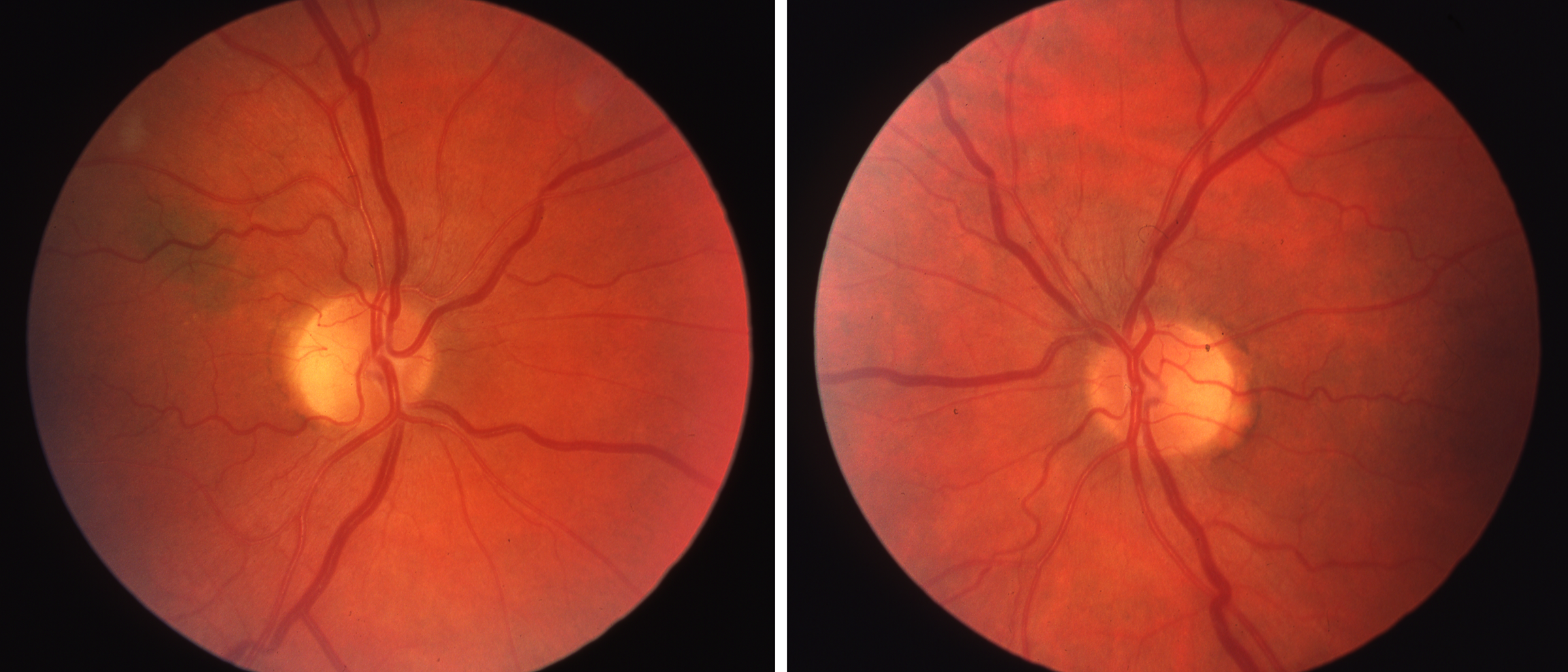( of )
Correct: 0
Incorrect: 0
A 50 year old woman is reporting slowly progressive vision loss in both eyes for the past year. The best-corrected visual acuities are 20/60 (6/18, 0.3) in each eye. There is no afferent pupil defect. Visual fields show bilateral centrocecal scotomas and the fundi look like this.

What might be causing the vision loss?
Incorrect
Incorrect
Correct!
The bilateral centrocecal scotomas on the visual field examination are the chief clues to localization and pathogenesis! Such defects occur from selective damage to the retinal ganglion cells located in the fovea and between the fovea and optic disc. Their axons are unmyelinated. Toxic, nutritional, and hereditary optic neuropathies do that kind of damage, affecting mitochondria. Optic neuritis preferentially affects myelinated axons, which lie mostly outside the maculopapillar bundles. Also, optic neuritis does not produce such symmetrical defects. Compressive and inflammatory conditions can affect all types of axons, but would be expected to produce asymmetric damage to the optic nerves. This patient had been treated with ethambutol for tuberculosis. Optic nerve toxicity is rare at daily ethambutol doses below 15mg/kg unless the patient has reduced clearance from kidney disease. Scrupulous visual acuity and color vision monitoring is critical in patients treated with ethambutol because vision loss may become irreversible—and especially disabling as it is binocular!
Incorrect